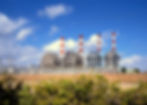Natural Gas leads the way in Florida’s clean energy landscape
- Patricia Johnson
- Feb 11
- 2 min read

According to the U.S. Energy Information Administration, natural gas accounts for approximately 75% of Florida’s electricity production.
Sponsored Article
The Sunshine State’s energy landscape distinguishes it from much of the country. While the United States as a whole relies on a diverse mix, including natural gas, coal, nuclear and renewables, Florida’s energy generation profile stands out because of its geography, population growth and climate-driven energy demands.
A Heavy Reliance on Natural Gas
Florida leans heavily on natural gas for electricity generation. According to the U.S. Energy Information Administration, natural gas accounts for approximately 75% of Florida’s electricity production, compared with the national average of around 40%. This heavy reliance results from Florida’s lack of coal and oil and from an extensive pipeline infrastructure that efficiently transports natural gas from out-of-state suppliers. Natural gas is favored for its cost-effectiveness and lower carbon emissions than coal.
The Role of Nuclear Power
Another distinctive feature of Florida’s energy landscape is its significant investment in nuclear power, which contributes about 12% of the state’s electricity, compared with the national average of approximately 18%. Florida has two major nuclear power plants: Turkey Point near Miami and St. Lucie on the Atlantic coast. These facilities provide stable, low-emission energy to meet the demands of Florida’s rapidly growing population.
Renewable Energy Falls a Little Short
Despite its sunny climate, Florida has been slower to adopt solar power than such states as California and Texas. Solar energy makes up 6% to 7% of the state’s electricity generation, below the national average of approximately 12%. But utility companies such as Florida Power & Light have made significant investments in solar farms in recent years to increase the state’s renewable energy capacity.
Lack of Coal and Hydropower
Unlike states in the Midwest and Appalachia, Florida has virtually eliminated coal from its energy mix. Coal accounts for less than 3% of the state’s power generation. Additionally, because of its flat terrain, Florida lacks significant hydropower resources, which are a major energy source in mountainous states.













